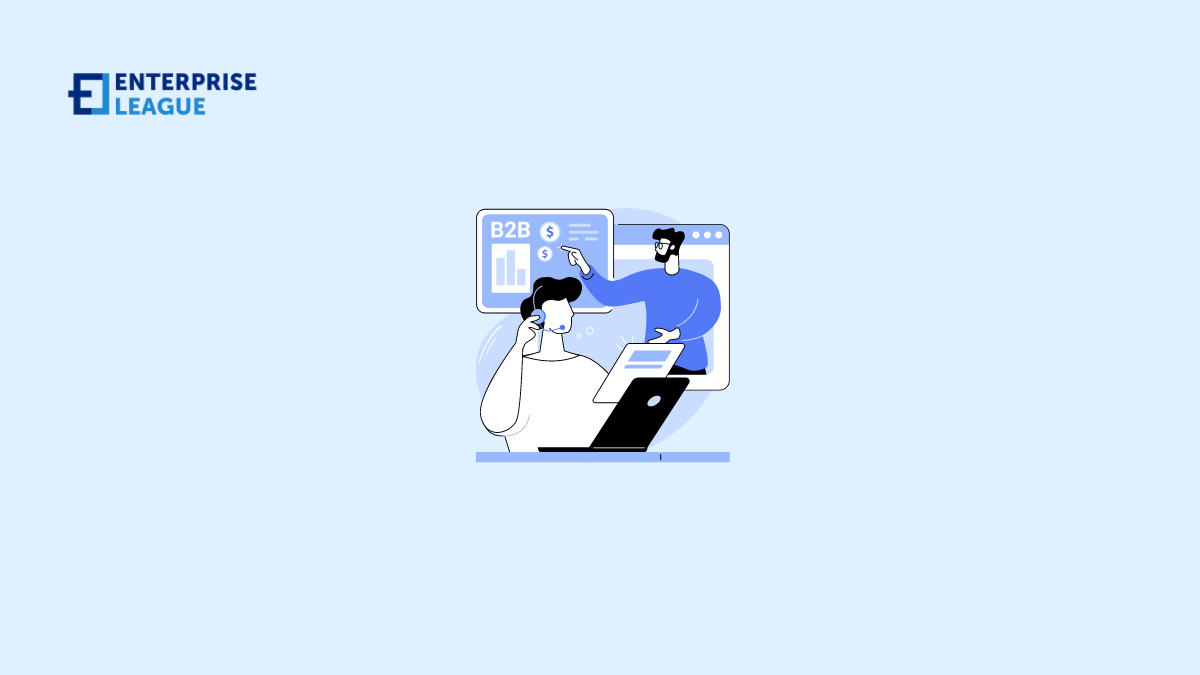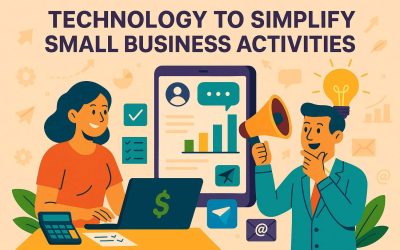For many businesses, growth is an essential objective. Business growth happens when a company increases revenue, expands its customer base, or begins producing more products and services.

4 ways to increase enterprise B2B sales in 2025
The ultimate goal of every enterprise is to reduce costs and increase revenue, and one of the most obvious ways to increase revenue is to increase sales. To do this, some enterprises rely mainly on inbound marketing, while others combine marketing and sales strategies for the best results.
When it comes to enterprise B2B sales, you need to work on building long-term relationships and constantly research the market. If you want to increase your profits and make your enterprise excel in 2025, keep reading.
4 effective ways to increase enterprise B2B sales year-round
If you follow these four ways and implement them into your business strategy you will definitely see an increase in enterprise B2B sales throughout the year.
Take sales management to the next level
To improve sales management in your business, take a look at these tips:
- Quotas and goals. To ensure that all team members work well together but are also fairly independent, you should set quotas and goals both for the whole team and individual representatives.
- Onboarding and training. These processes ensure that your representatives have the necessary information to perform well in their jobs. Include information about products and customers, and also train them on the software tools they’ll use.
- Evaluation and adaptation. If you want a strong sales team, you need to implement effective sales processes and frameworks that your reps should follow to close more deals. However, you also need to constantly evaluate and adapt these processes whenever there’s a significant change in your company.
Finally, sales management is a mission impossible without using reliable sales management apps. Technology can immensely help your business with numerous aspects, including sales management, so there’s no reason to refrain from using them. After all, keep in mind that your competitors probably use these tools, so you know what to do if you want to remain competitive.
Be clear about the value proposition
If you want to sell your product or service to a big company, you need to be ready for it. In other words, your sales reps need to show what exactly sets your business apart from the competition. Keep in mind that it’s all about the value you provide.
Since enterprise B2B sales deals generally mean higher stakes, make sure that you convey your unique value proposition when communicating with prospects. Clearly articulating the value of your offering to the prospect ensures that they understand how you can solve the problem they’re facing.
And if you cater to more customer segments that may have different problems and require different solutions, make sure to have a value proposition for each of those segments. One of the best ways to have a value proposition ready at any time is for your sales reps to have it in a script and memorize it.
Measure and improve sales velocity
With sales velocity, you measure how fast your company earns profits. To measure sales velocity, you need to know how many qualified leads you have in your pipeline, your average deal value, your closing ratio, as well as the length of the sales cycle. Then you multiply the number of qualified leads by the average deal value and win rate, and finally, divide that number by the length of the sales cycle.
This offers various useful insights, like helping you forecast revenue more accurately. For instance, you can multiply the number of days until the end of the year by your sales velocity and you’ll see how much more revenue your business will generate until the end of the year.
And if you’re interested in managing and improving sales velocity, these tips may come in handy:
-
Increase the number of qualified leads by making more cold calls, sending more cold pitches, as well as investing more in marketing channels that perform best. Many companies see strong results by outsourcing their business development reps (BRDs). One of the biggest benefits of outsourced BDRs is the ability to ramp up outreach fast and keep your pipeline full of qualified leads, without the overhead of hiring and training an in-house team.
-
Increase the average deal value by upselling and focusing on high-quality, upmarket leads.
- Increase your win rate by using a proposal tool and account-based selling strategies, as well as identifying the lead’s pain points and goals.
- Make your average sales cycle shorter by conducting better initial research, identifying the expectations and requirements of all decision-makers, and letting go of the deals that take too much time.
Bridge the gap between sales and marketing
It’s undeniable that marketing and sales work best together. If you want to foster client relationships throughout every stage of the funnel, you need to bridge the gap between marketing and sales.
This can create a more effective system for identifying, targeting, and nurturing qualified leads. As a result, this leads to better conversion rates and ROI across the entire sales process.
Moreover, collaboration can also give both departments insights into what works and what could be improved in the sales funnel. This leads to more informed decisions on how to work on your sales efforts.
Conclusion
Today, there are so many opportunities to improve enterprise B2B sales. With more channels for customer communication, better access to decision-makers, and more data than ever, everything is practically in your hands. It’s up to you to do your best and lead your sales team on its way to success.
More must-read stories from Enterprise League:
- Innovative customer appreciation ideas for small businesses.
- Find out how to get more customers for your business in a unquie way.
- Warning signs of a terrible boss that everyone must be aware of.
- Aspects that show the importance of cross-cultural communication in the workplace.
- Why hiring millennials might be the best decision you can ever make.
Related Articles
5 creative strategies to help you take your business to another level
Tax preparation tips to help you file your taxes smoothly
Before you prepare your tax return, consider using our list of tax preparation tips to guide you.
5 proven and tested ways to motivate your employees
A company that strives to succeed must have motivated employees that are willing to put some effort in making this happen. Here is what you should do to motivate your employees.
How to bring awareness to your small business
There are many ways how to bring awareness to your small business and improve your services. This blog post provides two tips that can be used to do just that.
5 tips to enhance employee performance
When you want your employees to perform at the highest level, what strategy do you need to do? Here are five tips to help you to enhance employee performance.





















